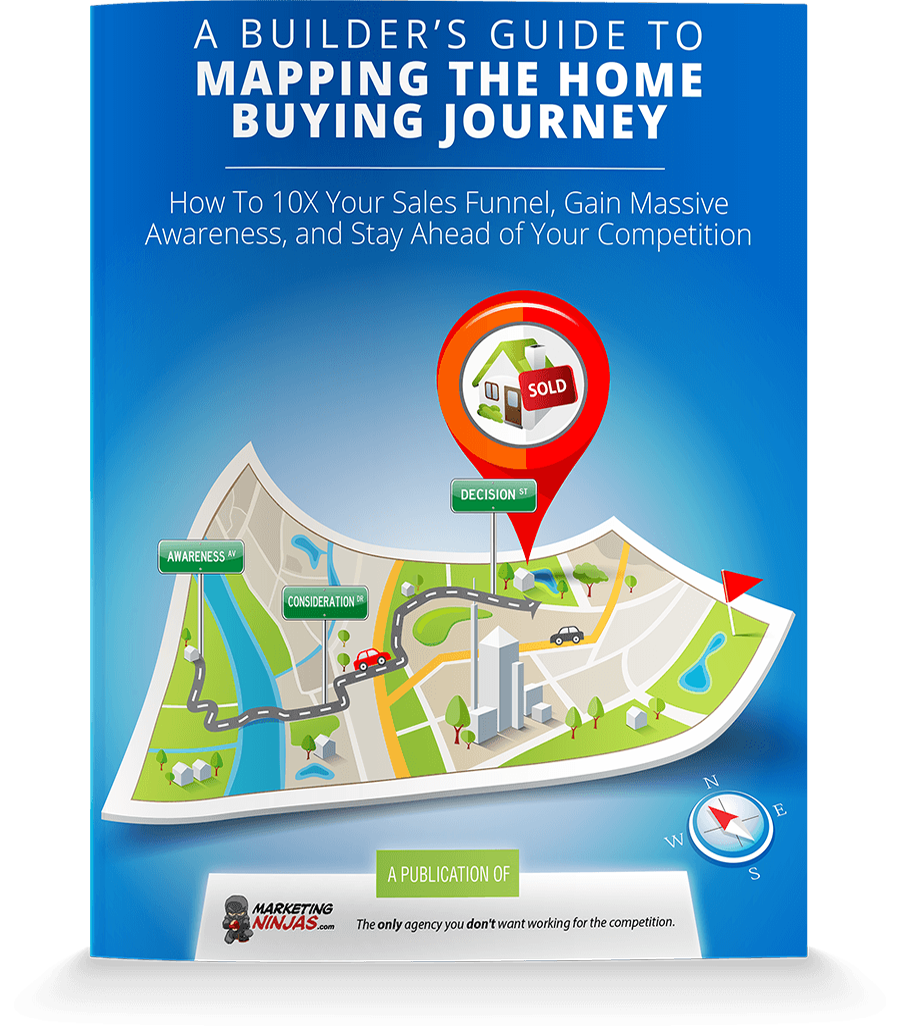The Sub-domain Versus Sub-directory Debate
The great debate...
Is a sub-domain or a sub-directory (also called sub-folders) file structure best for your blog? This debate has been going on for years and years. Experts on both sides have conducted tests and research and written blogs and research posts about their findings.
Here's what we're talking about:
Having your blog setup as a sub-domain would look like this:
Having it set up like a sub-directory would look like this:
The fact is, the difference between hosting your blog one way or another is negligible. Google (who has the largest search engine market share by far) says there is no difference either way.
Reading time: 7 minutes
Level: Intermediate
Key takeaways:
- which is better? sub-directory or sub-domain?
- how Google looks at ranking websites
- 4 ways you can work on your SEO that will make a big difference
Matt Cutts, the former head of search quality and official spokesman, made a video answering this very question from Google's stance. Check it out:
Matt says that Google doesn't care either way and as long as they're structured properly, it is essentially irrelevant.
Another article to support this stance talks about the differences between a sub-domain vs a sub-directory and how when you do it right, it makes no difference.
While there are a large number of experts that say that having your blog as a sub-directory is the preferred way, what's important is you actually understand what they're saying here. If you're setting up a blog, and you have the option to easily do it either way, then you should set up as a sub-directory. It doesn't make sense to set up as a sub-domain if you can easily set-up as a sub-directory. And one of the benefits of doing it that way is so if Google does happen to change their stance on how they weight the differences, you're likely safer having it all under one file structure.
But the chances of Google changing their stance on it is highly unlikely, which I'll explain in a moment.
But first, let's debunk the myth that having your blog set up as a sub-domain is bad.

What Kind Of Impact and Factors Are We Talking About Here?
If having your blog as a sub-directory versus a sub-domain made that big of an impact in your search rankings, you'd never see websites listed with sub-domains coming up in the top 10 search results. But we know that's not true. In fact, Wikipedia is one of the most highly ranked websites on the Internet and they use sub-domains in their site structure.
Further to that, there are over 200 different factors that Google looks at when they determine how to rank a website. Brian Dean of Backlinko put together a complete list, with details, in a blog post appropriately titled "Google's 200 Ranking Factors: The Complete List". He's one of the most reputable SEO experts in the world. If you look through that list, he doesn't mention sub-domain versus sub-directory as a factor.
Google looks at all of your subdomains as part of your root domain. This is why they say it doesn't matter to them. If there was a major advantage to having your blog as a sub-directory over a sub-domain, not only would Google have said so in their video above, but these major websites that do utilize a sub-domain structure (like Wikipedia or HubSpot) wouldn't have their site structured as a sub-domain. And you also wouldn't see websites that use a sub-domain structure show up in the top of the search rankings.
What's Google's Primary Objective In Search?
Think about it. What's Google's main objective? It's to deliver the best content that's most relevant to the searcher's query. That's because they want people to use Google because they make the majority of their revenue from ads. If they didn't serve up the best content for the searcher, the searcher would go somewhere else to look, Google would lose market share, and eventually ad revenue.
Google doesn't care if the content is on a sub-domain or sub-directory, so long as the content is the best response to the searcher's query. And they're not going to serve up less desirable content because it's in a sub-directory instead of a sub-domain.
If you're concerned about how well you website is ranking, then focusing on the known factors that make a major difference is the best use of your time and will give you the biggest improvements in search ranking.
How To Make The Biggest Impact In Your Search Rankings
Whether you put blog posts in a sub-domain or a sub-directory isn't going to make a difference if your mobile website doesn't perform well, your site's not secured, your page load times are terrible, or your internal linking structure stinks (think siloing). You'll get more movement in the search engines if you focus on the factors that truly make a difference. Sub-domain or sub-directory isn't one of them.
Another reputable SEO industry source, SearchEngineLand, has put together the Periodic Table of SEO Success Factors. This basically takes the of Google ranking factors and boils it all down to which ones make the biggest positive and negative impacts on your search rankings.
If you're concerned about how well your website is ranking, here are my recommendations of what to look at first:

1. Focus On Your Mobile Version
If your website is responsive, that's excellent as that's Google's preference. Google recently changed the way that they're ranking both mobile and desktop versions of websites. They're taking a mobile-first approach. This means that they're ranking even desktop sites by how well they do with the mobile versions. If you're looking for some more details about this, check out this article from MOZ.
Google rarely ever openly admits what is a ranking factor, but they've admitted to this one. The main ranking factor with mobile is your site load speed. Focus on SPEED.
2. Get Your Website an SSL Certificate
This is your HTTPS:// secure connection on your website. Google also publicly announced that this will have a direct effect on your rankings.
3. Set up a Silo Structure On Your Website
This is a technical approach to SEO site structure where you plan and map out the pages of your website, and make sure that supporting pages link to and boost up other key pillar pages of your website. It's a vertical architecture versus the typical flat structure. We did this for a client, and they experienced an increase in site rankings as well as traffic from organic sources.
An extra note for HubSpot customers: HubSpot is sunsetting their keywords tool and now have in place a content strategy tool which is designed to help you silo your content. The typical focus on keywords and ranking isn't as valuable of a strategy any longer now that Google's RankBrain algorithm update is using machine learning to identify the search intent of a query and modifying the search results based on how users interact with it. I found two great articles about RankBrain for you here and here.
Focus On What REALLY Matters
For those who feel that this will help them rank higher, it's time to ask a serious question.
Why do you want to rank higher; is it to get more traffic or more sales leads?
At the end of the day, where you rank in Google is secondary to your website's ability to generate leads. I'm assuming that this is your actual goal here - to get more leads.
Let's say your website currently gets 10,000 visitors per month and converts at roughly 1%. That means you'll get 100 lead conversions each month. If you wanted to increase your leads to 200 each month, then you have two options:
- Increase your website traffic by 100% (go from 10,000 to 20,000 visitors per month)
- Increase your website conversion rate by 100% (go from 1% to 2%)
It's WAY easier to optimize your website to increase your lead conversion rate by 1% than it is to try and double the visitors to your website. If you can do both, that's great, but prioritize increasing your lead conversion ability over your traffic. The slightest tweak to your website or landing page can see significant increases in your lead generation ability.
At Marketing Ninjas, we've been doing lead generation and website optimization for nearly a decade. We can be a huge resource for you as you go about trying to increase your sales leads and website traffic. Contact us today if you'd like more information or to have a free consultation.
Summary
When it comes to this debate, everyone will have their own opinion. But when it comes to what Google says, the difference doesn't really exist. If you're starting from scratch and can do so easily, go ahead and set it up as a sub-directory. However, this in no way means that a sub-domain is bad.
If you know anything about SEO then you know the name Brian Dean. According to his list of Google's ranking factors (a list of 200 different factors) the sub-domain/sub-directory debate doesn't make the list. That's right. Out of 200 factors you should consider, domain versus directory ISN'T one of them.
The most important thing to keep in mind is the primary objective of search engines. That is, to deliver great and relevant content to the user. So if your content is the best result, whether it's on a sub-domain or sub-directory doesn't matter. Your content made the user happy which makes the search engine happy.
If you want my recommedations, I have a list of the top items I feel every site should look at first, before anything else:
1. Focus on the mobile version of your site
2. Get your website an SSL Certificate
3. Set up a silo structure for your website
Basically, you need to focus on what really matters. Is it higher rankings or more leads? Because those are two completely separate goals. I'd like to think that you're aiming for more leads. Let me tell you, it's much easier to optimize your website to increase conversion rates than it is to increase actual traffic numbers. Focus on working with the traffic you're already getting before trying to make that number larger.








